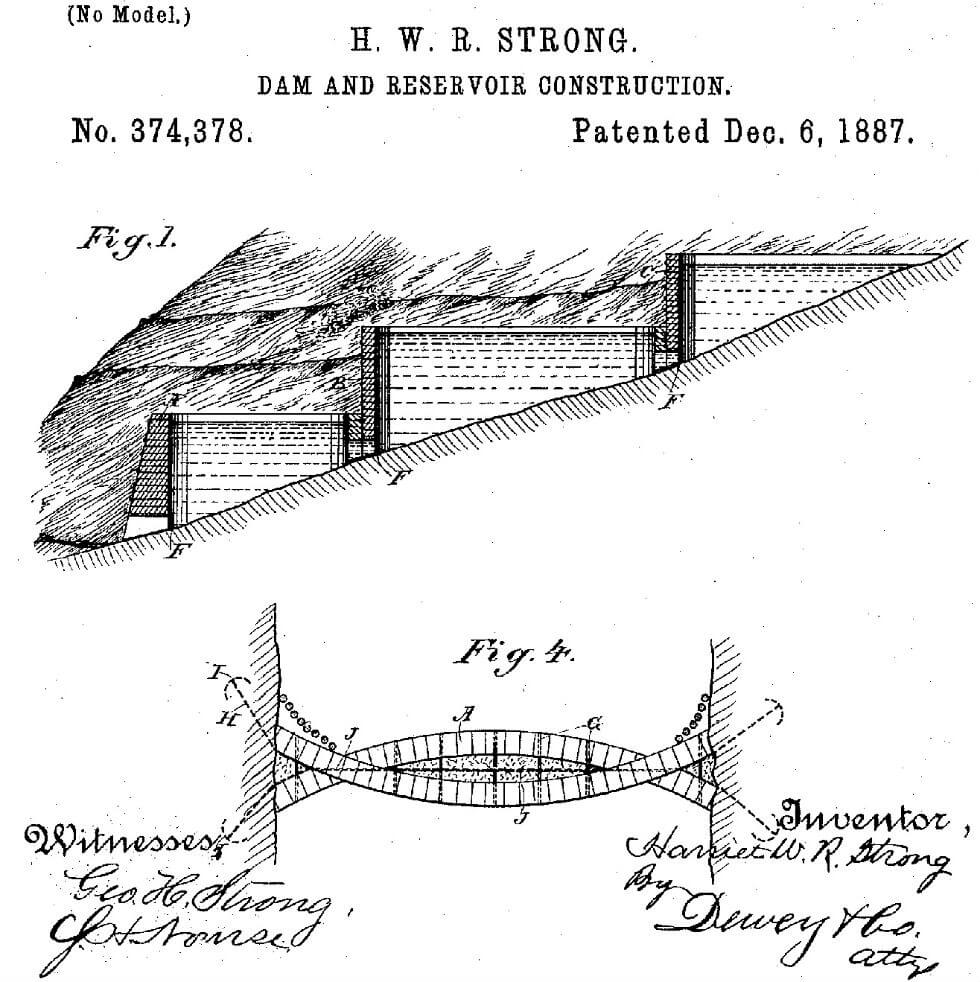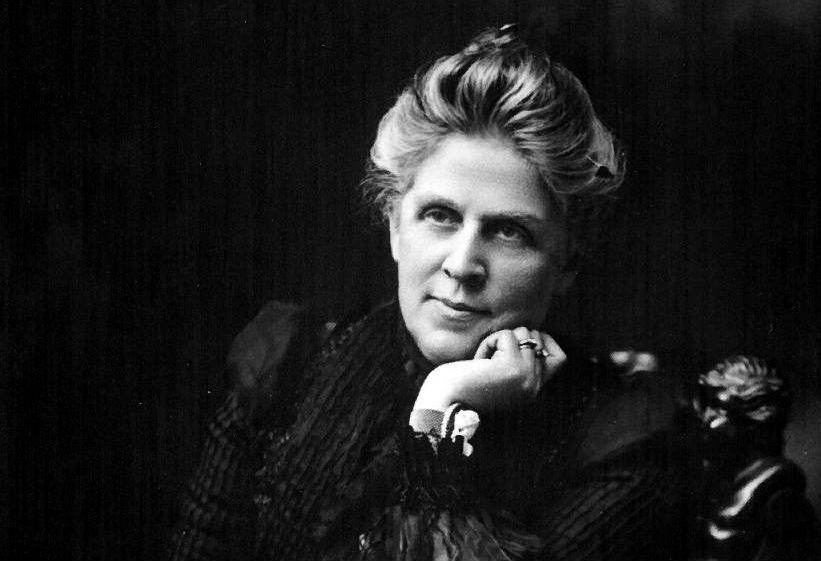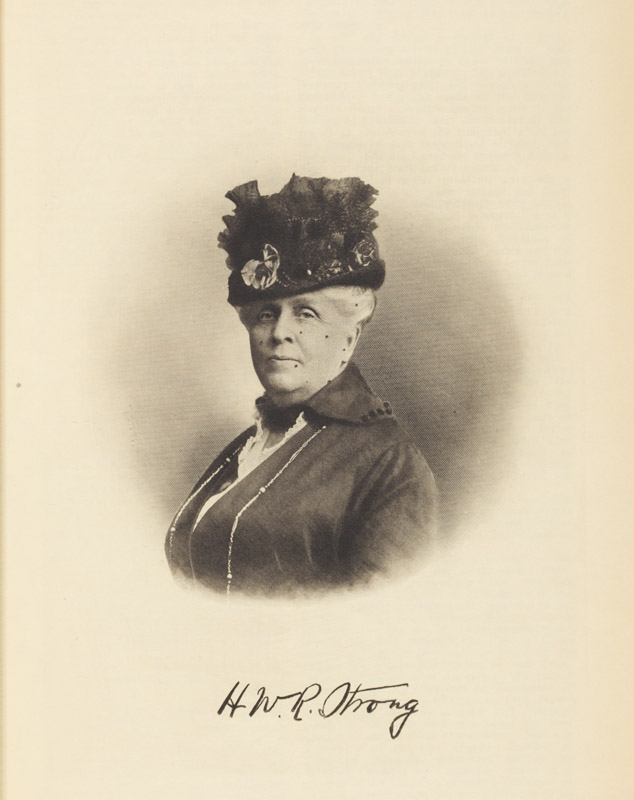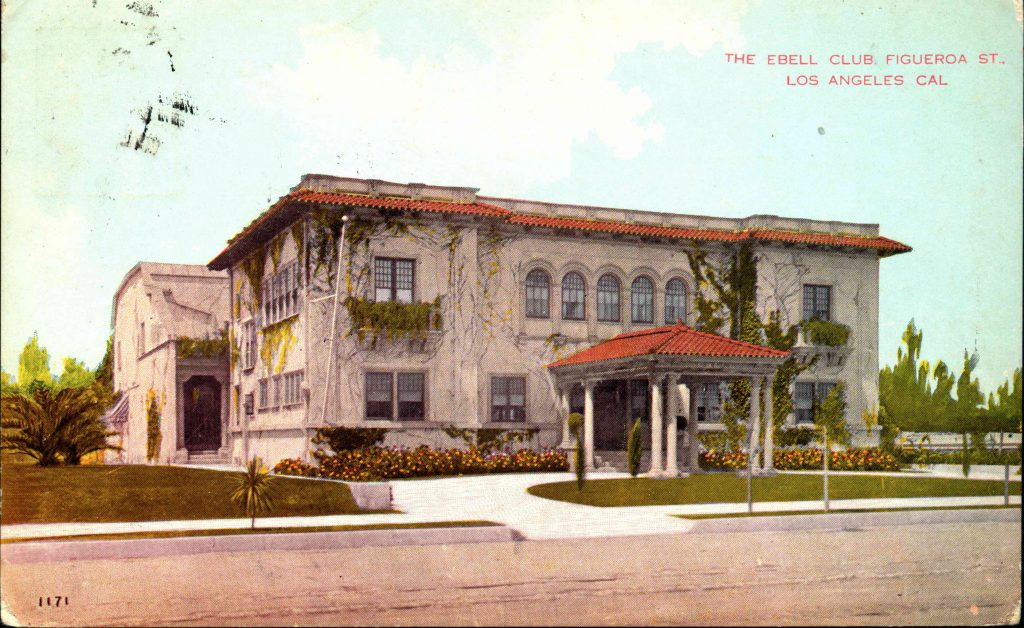On December 6, 1887, the U.S. Patent and Trademark Office issues a patent for Dam and Reservoir Construction to Harriet Russell Strong, Whittier walnut farmer and single mother of four.
Widowed at 39, Strong is much more than an inventor. she is a successful business owner, conservationist, philanthropist and advocate for women’s rights.
Strong is born in New York on July 23, 1844, but grows up in mining communities along the California-Nevada border. At 19, she marries mining engineer Charles Strong, almost twice her age. They purchase 325 acres of semi-arid ranch land in the San Gabriel Valley from Pio Pico, the last Mexican governor of Alta California and a major landholder in Southern California.
Charles Strong commits suicide in 1883 after being swindled in a mining investment scam. Strong finds herself the sole supporter of four daughters and the owner of a debt-ridden ranch.
Looking for a higher-grossing crop than the wheat her husband had been growing on the ranch, she plants walnut trees, a profitable crop but one not grown before in Southern California. A single walnut tree needs around 50 inches of water per season.
Seeing the necessity of an abundant water supply for her orchard, Strong — who has no formal engineering background — studies irrigation and flood patterns in the valley. She develops an ingenious method of managing floods and storing water by using a series of stepped dams. As water overflows a lower dam it is held by higher one.
In Strong’s patent application, she spells out the plan:
“It consists of a series of dams of peculiar construction placed, successively, in the channel or water-course, and at such a distance apart that the water in the lower basins acts as a brace and support for the dams above.”

Strong becomes known as an authority on water management and conservation. She expands her walnut orchard and becomes the largest walnut grower in the region, earning the nickname “Walnut Queen.”
She testifies before Congress in 1918 in support of daming the Colorado River to control floods, generate electricity and supply irrigation water to Southern California farms. Congress rejects the idea, but 10 years later, Strong is vindicated when Congress approves the Hoover Dam in 1928.
Strong is the first woman member of the Los Angeles Chamber of Commerce. She founds the Ebell Club of Los Angeles, a philanthropic organization for women, and travels the country with Susan B. Anthony to support women’s suffrage. She is the first woman trustee of the University of Southern California Law School.
Soon after her friend and neighbor Pio Pico dies in 1894, the Pico mansion falls into disrepair, and by 1906 is in danger of being demolished. Strong leads the effort by women’s civic groups to raise funds for the city of Whittier to buy the property and restore the adobe. Conveyed to the state in 1917, the Pico adobe becomes one of California’s first Historic Parks in 1927.
TOP PHOTO: Harriet Strong. Public Domain


